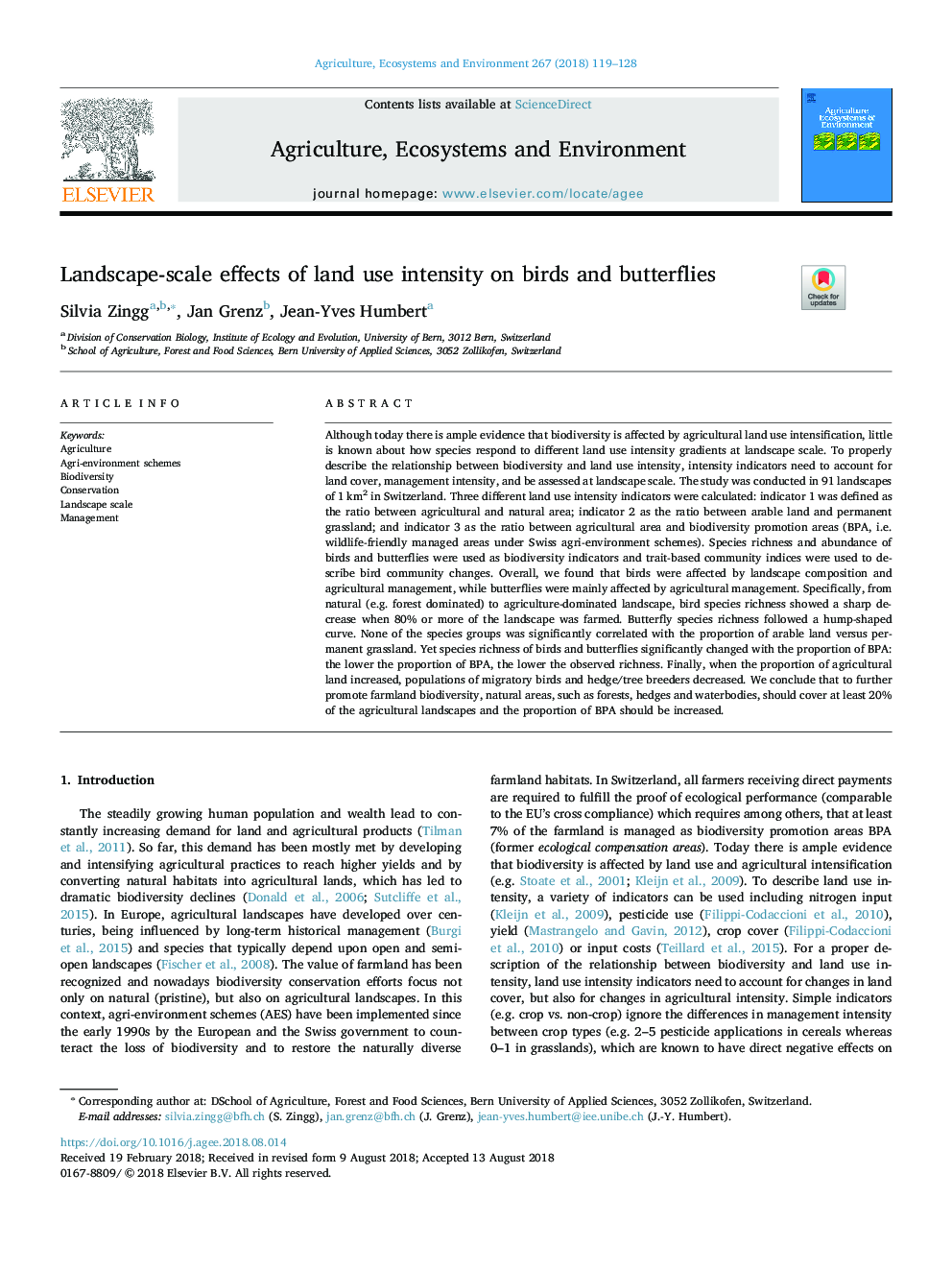| کد مقاله | کد نشریه | سال انتشار | مقاله انگلیسی | نسخه تمام متن |
|---|---|---|---|---|
| 9954572 | 1551985 | 2018 | 10 صفحه PDF | دانلود رایگان |
عنوان انگلیسی مقاله ISI
Landscape-scale effects of land use intensity on birds and butterflies
ترجمه فارسی عنوان
اثرات چشم انداز اثر شدت مصرف زمین بر پرندگان و پروانه ها
دانلود مقاله + سفارش ترجمه
دانلود مقاله ISI انگلیسی
رایگان برای ایرانیان
کلمات کلیدی
کشاورزی، برنامه های محیط زیست، تنوع زیستی، حفاظت، مقیاس چشم انداز، مدیریت،
موضوعات مرتبط
علوم زیستی و بیوفناوری
علوم کشاورزی و بیولوژیک
علوم زراعت و اصلاح نباتات
چکیده انگلیسی
Although today there is ample evidence that biodiversity is affected by agricultural land use intensification, little is known about how species respond to different land use intensity gradients at landscape scale. To properly describe the relationship between biodiversity and land use intensity, intensity indicators need to account for land cover, management intensity, and be assessed at landscape scale. The study was conducted in 91 landscapes of 1âkm2 in Switzerland. Three different land use intensity indicators were calculated: indicator 1 was defined as the ratio between agricultural and natural area; indicator 2 as the ratio between arable land and permanent grassland; and indicator 3 as the ratio between agricultural area and biodiversity promotion areas (BPA, i.e. wildlife-friendly managed areas under Swiss agri-environment schemes). Species richness and abundance of birds and butterflies were used as biodiversity indicators and trait-based community indices were used to describe bird community changes. Overall, we found that birds were affected by landscape composition and agricultural management, while butterflies were mainly affected by agricultural management. Specifically, from natural (e.g. forest dominated) to agriculture-dominated landscape, bird species richness showed a sharp decrease when 80% or more of the landscape was farmed. Butterfly species richness followed a hump-shaped curve. None of the species groups was significantly correlated with the proportion of arable land versus permanent grassland. Yet species richness of birds and butterflies significantly changed with the proportion of BPA: the lower the proportion of BPA, the lower the observed richness. Finally, when the proportion of agricultural land increased, populations of migratory birds and hedge/tree breeders decreased. We conclude that to further promote farmland biodiversity, natural areas, such as forests, hedges and waterbodies, should cover at least 20% of the agricultural landscapes and the proportion of BPA should be increased.
ناشر
Database: Elsevier - ScienceDirect (ساینس دایرکت)
Journal: Agriculture, Ecosystems & Environment - Volume 267, 15 November 2018, Pages 119-128
Journal: Agriculture, Ecosystems & Environment - Volume 267, 15 November 2018, Pages 119-128
نویسندگان
Silvia Zingg, Jan Grenz, Jean-Yves Humbert,
